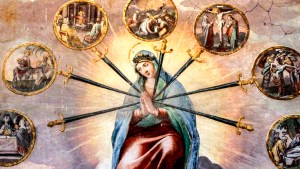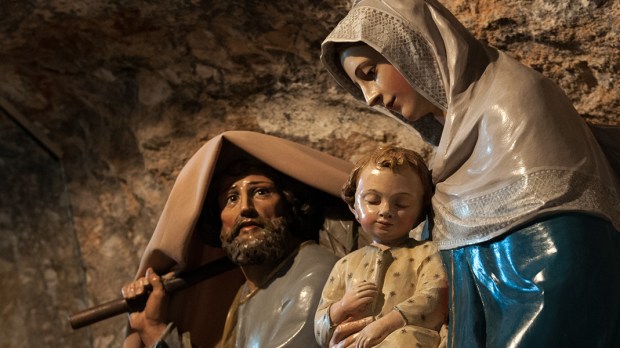We might be already familiar with the seven sorrows of Mary, but what about the five sorrows of Saint Joseph? St Joseph’s sorrows are also linked to five corresponding joys.
Here they are:
The first sorrow of St. Joseph was seeing the Child Jesus be born in a poor stable in Bethlehem, unable to get even a simple hovel for him to be born in.
This sorrow was joined to the joy of seeing and hearing the angels and shepherds coming to adore the divine Child, and then receiving the visit of the Magi from the East with gold, frankincense, and myrrh.
The second sorrow was the day of the Presentation of the Child in the Temple, when St. Joseph heard the prophet Simeon announce that Jesus would be a cause of division, and that many people would reject him, and that because of him, a sword of suffering would pierce Mary’s heart.
This suffering was joined to the happiness of hearing the prophet announce that Jesus would be the light that would illumine all nations, and the glory of the people of Israel.
The third sorrow was the flight into Egypt—having to flee in fear to the desert, without shade or water, carrying the newborn child.
This suffering is joined to the happiness of being well-received in Egypt, and the joy of seeing the Child Jesus grow there.
The fourth sorrow was the loss of the Child Jesus in the temple and the anguish of seeking him for three days.
This suffering was followed by the joy of finding the Child Jesus safe and sound, and of having Jesus in Joseph’s home until he turned 30, seeing him grow in age, wisdom, and grace before God and men.

Read more:
Pope Francis’ devotion to St. Joseph Sleeping and Mary Untier of Knots
The fifth sorrow was the separation from Jesus and Mary at the time of his death.
But this suffering was followed by the joy, the peace, and the consolation of dying accompanied by the two holiest beings on Earth.
The Gospel does not record a single word that Saint Joseph said, but we can see who he was by the way he remained faithful to God through all the sorrows and joys of his life as the foster father of the Redeemer.

Read more:
A short guide to praying the Chaplet of the Seven Sorrows of Mary

